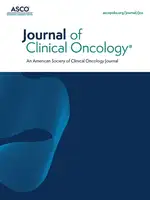Since its launch 5 years ago, the Cancer Drugs Fund (CDF) is estimated to have helped over 95,000 patients gain access to lifesaving drugs and technologies. The CDF began as a temporary collaboration, between NICE and NHS England, that was extended in 2014 and due to end March 2016. It was decided that in order to continue beyond 2016, major reforms would be needed. Two key criticisms that drove these changes were concerns that patients may not be benefiting fully and that funding was not being used appropriately. After a 12-week consultation, new guidelines were drawn up to improve the effectiveness of the CDF appraisal process.
At the ISPOR 19th Annual European Congress, members of industry and NICE came together to discuss what these changes mean for patients, manufacturers and decision makers. The session was moderated by Dr Caroline Ling, Senior Director at RTI-Health Solutions; she was joined by her colleague Dr Sorrel Wolowacz, Head of European Health Economics. Professor Meindert Boysen from the London School of Hygiene & Tropical Medicine attended as a representative of NICE. The final presenter was Dr David Tyas, Associate Director of Health Outcomes and Research at Bristol-Myers Squibb.
The New Cancer Drugs Fund: Implications for NICE
Presented by Meindert Boysen
The new fund aims to allow better access to life-saving drugs, give greater value for taxpayer money and offer a new fast-track route for the most promising upcoming therapies. The key features of the new fund are:
- All new licensed oncology drugs will be referred to NICE
- Draft guidance will be given within 90 days of market authorisation
- Interim funding for positive recommendations
- Managed access with clear entry and exit criteria
- £340 million investment budget for new and transitional drugs
The new system of managed access will fund promising new therapies, with a specific time period for additional data collections followed by an appraisal review. Interim funding aims to provide financial support throughout the NICE guidance drafting process. This is estimated to allow market access up to 8 months quicker than the old system. Under the new system, committees will be encouraged to be more flexible with end-of-life criteria, such as understanding that some patients will have shorter life expectancies regardless of treatment; and allowing further data collection for those treatments that have been rejected due to high clinical uncertainty, (i.e. lack of efficacy and cost-effective data). A data collection arrangement (DCA) working group, with representatives from NICE and NHS England, was formed to reduce clinical uncertainty through systemic anti-cancer therapy (SACT) data collection from public health resources, real world observations, and current and planned clinical studies.
Implications for the Manufacturer/Sponsor
Presented by David Tyas
Proactive manufacturers will find these new changes welcoming. Under the old system, drug developers would create a product package, which would be reviewed for approval; a process that could take up to 12 months. By providing data early, NICE will help support manufacturers throughout the remaining process. While committees aim to be more flexible, manufacturers also have a responsibility to have a detailed product dossier. Knowing how to present their product, having strong global communication and a clear exit strategy, will help push new therapies more quickly to the market. It would be advantageous for manufacturers to utilise good study design, such as long-term follow-up past registration and to use clinicians who are familiar with the product, to show the potential of the drug to be cost-effective in the long-run.
While the new system offers a greater flexibility, longer-term tracking of patient benefits and a stronger engagement between NHS England and NICE; there is still the question of who bears the cost of new, expensive ‘fast-track’ drugs. Many in the industry would expect the cost of new drugs to be set by the manufacturers. As such there is a danger that the expense of new drugs may fall upon the shoulders of taxpayers, which would make the new CDF more costly in the future.
Additional Data Collection
Presented by Sorrel Wolowacz
A key feature of the new system is increased data collection for the reassessment of drugs not recommended for use, and to provide useful follow-up data on registered treatments. The new CDF appraisal process aims to tackle the clinical uncertainty of novel drugs through more rigorous data collection. Under the new system, an appraisal committee will assess the level of clinical uncertainty and the feasibility of the data required by the CDF. The DCA will then review minimal timeframes, population size and treatment duration to develop suitable study designs that can be reviewed by stakeholders. The most common means of data collection are through the SACT dataset, although there are options for ongoing and new clinical studies.
The key feature of SACTis the national collection of data from NHS England chemotherapy providers, with the potential to become linked to other health sources. Set up in April 2014, SACT includes data on patient demographics, disease progression, and treatment regimen. In the future, it is hoped that the database will provide historic information that can be used as a reference data set. Collecting data via SACT gives insight into clinical effectiveness, potential study design issues, and treatment patterns in a clinical setting.
These changes aim to bring new drugs and technologies more quickly to patients. Therapies that show promise will be given interim funding and clear positive guidance during development. Manufacturers who are well prepared will be given more support. Flexible decision making and follow-up data collection will give drugs with high clinical uncertainty a chance. Widespread collection of long-term data can be used to build a bank of information that will help future decision making.













.webp)




